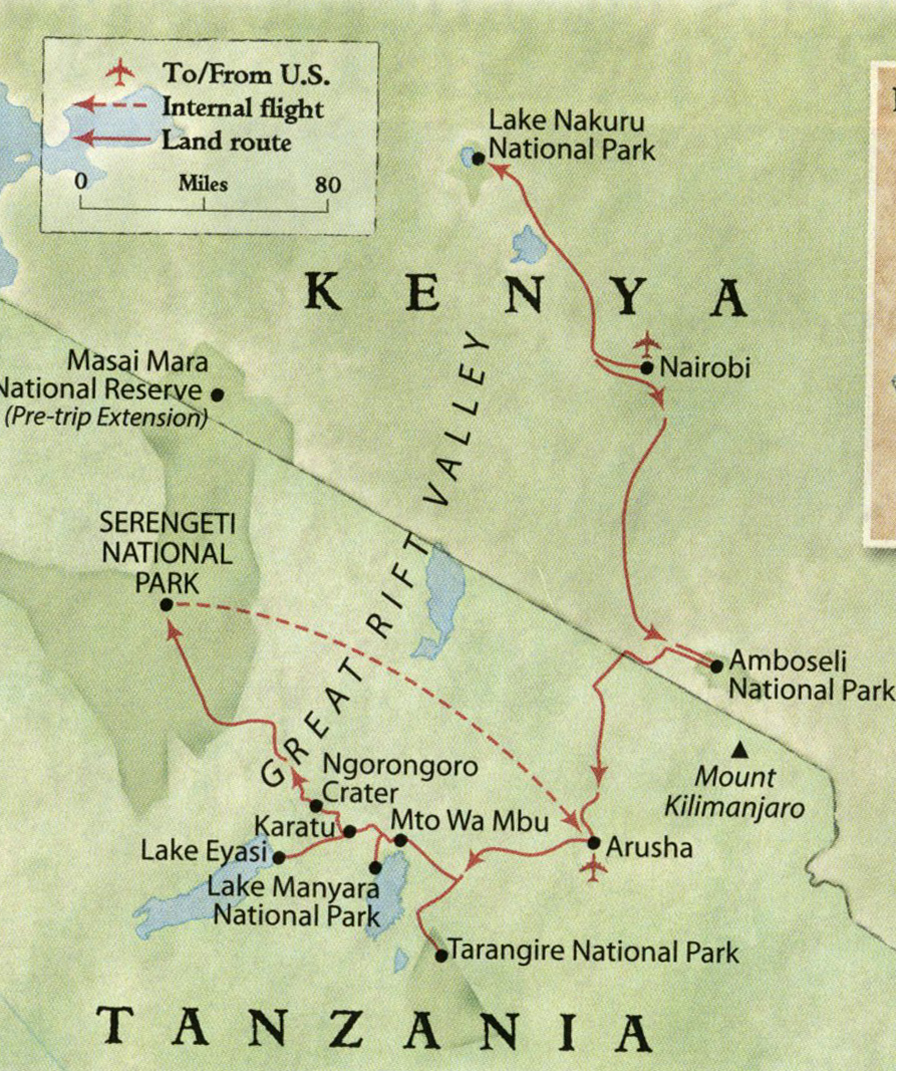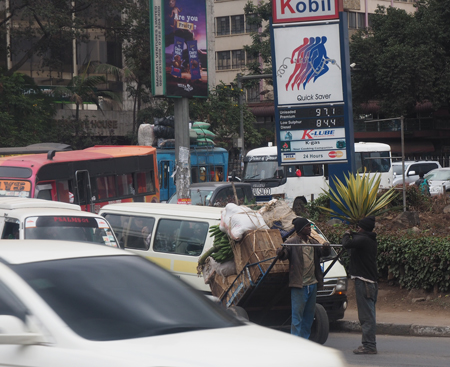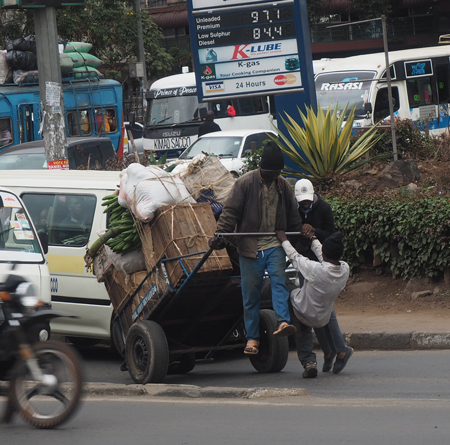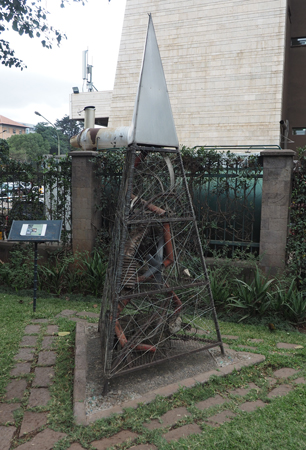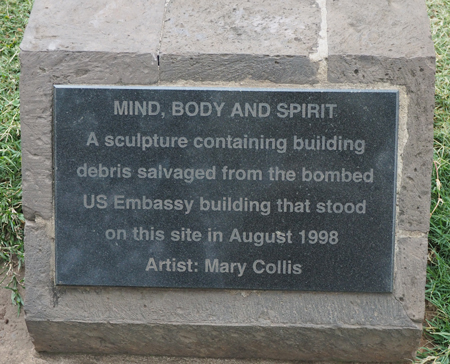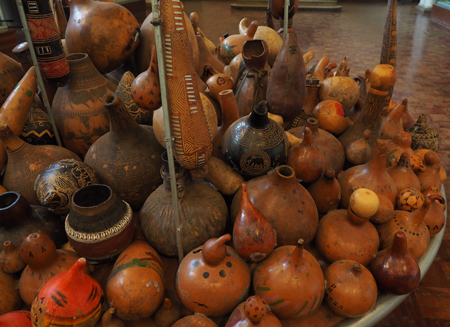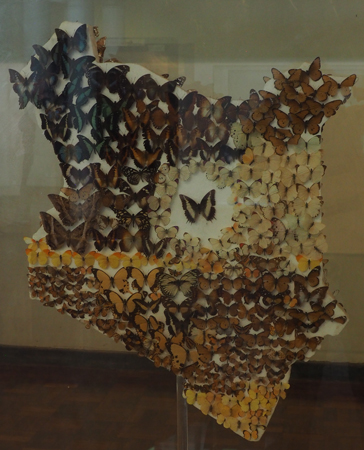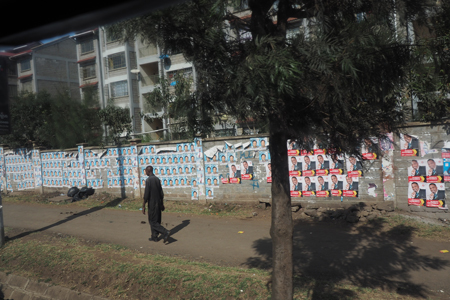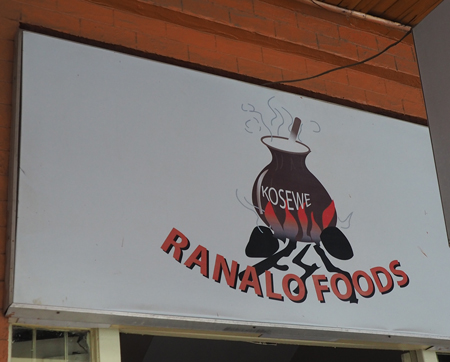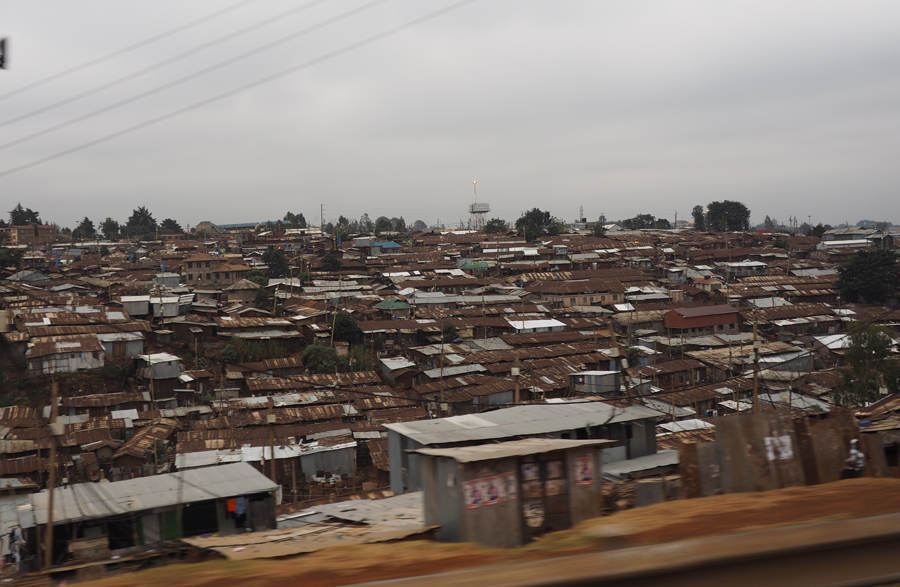OAT: The Best of Kenya and Tanzania
August 2 – 19, 2017
In August this year we were finally able to return to Africa to do two OAT tours: the first in Kenya and Tanzania and the second in Namibia. Both tours featured lots of animals, many encounters with diverse local cultural groups, and a huge variety of different landscapes to feast the eyes on. An African safari, along with Antarctica and the Albuquerque Balloon Fiesta, represents one of the three trips that you just have to experience first-hand! There is nothing like looking out over a grass and tree studded plain and seeing six or more different species of wild animals (e.g., giraffes, elephants, ostriches, zebras, warthogs, lions, and several varieties of antelope) all peacefully coexisting. There is no place in America that even comes close to this experience. Our cameras managed to take over 5,600 photos, only some of which are presented in the web pages which follow. Please enjoy and start to save for your trip, if you haven't already been!
Itinerary: The Best of Kenya and Tanzania
| August 2-5 | Nairobi; Rothschild Giraffe Center; Karen Blixen Museum; Kazuri Beads; Drive to Nakuru |
| August 6 | Lake Nakuru National Park |
| August 7 | Market; Drive to Amboseli NP; Maasai Goat Market |
| August 7-8 | Amboseli National Park |
| August 8 | Maasai Village |
| August 9 | |
| August 10 | Tarangire National Park |
| August 11 | Drive to Lake Manyara NP; Lake Manyara National Park; Karatu |
| August 12 | Hadzabe Tribe; Metal Workers; Datoga Tribe; Baobab-Karatu area |
| August 13 | Brick Making; Corn husking/Wine making; Coffee plantation; Karatu Market |
| August 14-15 | Ngorongoro Crater National Park |
| August 15 | Drive to Serengeti National Park |
| August 15-18 | Serengeti National Park |
| August 19 | Fly to Arusha; Arusha |
| August 19-21 | Johannesburg |
The Best of Kenya and Tanzania
|
|
Wed. & Thurs., 8/2 & 3/2017 – Estes Park to Nairobi, Kenya
We got up at 4 AM and left home at 5. Our flight plan took us from Denver to Chicago (United) to Frankfurt (Lufthansa) to Nairobi, Kenya (Lufthansa). Thirty hours after starting out we arrived at our destination. We waited a very long time for our luggage (45 minutes), but it finally arrived. Witress, our OAT tour director, was waiting for us outside and had a driver take us to the Weston Hotel while he waited for the arrival of other travelers on our tour.
Fri., 8/4/2017 – Nairobi, Kenya
At breakfast we met Jason and Pat DeVries, Marge’s sister and brother-in-law. They flew in last night later than we did.
Breakfast was at 8, our trip briefing at 9, and then we began a city tour at 10.
Flag of Kenya
The Kenyan flag was adopted on 12 December 1963 as the country's flag. The color black represents the people of the Republic of Kenya, red is for the blood shed during the fight for independence, and green is for the country's landscape and natural wealth. The white fimbriation (stripes) symbolizes peace and honesty. The black, red, and white traditional Maasai shield and two spears symbolize the defense of all the things mentioned above (Wikipedia).
Kenyan license plate
Cows on a main road
Traffic in Nairobi is horrendous. Cars must contend with motorcycles cutting in and out, driving the wrong way, or driving on pedestrian walkways. We even drove past a herd of cows in the city being walked opposing traffic to eat what grass could be found on the shoulder of the road.
Our first stop was at the Memorial Park at the place of the 1998 bombing of the US embassy in Nairobi. (The US embassy in Tanzania was bombed at the same time.) We watched a documentary of the event, the aftermath, and the investigation that found who did it and how it all had occurred. It was an incredible act of terror by Al-Qaida.
Pull-cart with a problem
Solving the problem
At the memorial to the 1998 bombing of the US Embassy in Nairobi
Our second stop was at the Nairobi National Museum. The first room had modern representations of Kenyan culture. One “statue” was made of gourds. The largest one represented the government taking care of all the various shapes and colors of the gourds representing the people and four offshoots representing the vices the government was trying to oust – corruption, etc. Another room had pictures of each of the 42 tribes living in Kenya. Each was identifiable by clothing, jewelry, tattoos, or something they did differently.
Close-up of the tiled pillar
Gourd sculpture
Gourd sculpture details
Map of Kenya constructed from butterflies
Election posters everywhere!
For lunch we were treated to traditional finger food. Rice, three kinds of spinach, beef stew, chicken stew, and several kinds of grilled fish all to be eaten with our hands! We tried doing it by rolling some rice into a ball and using it to pinch some spinach and then dip it into the meat sauce. Our rice would fall apart and the juice ran down our arms. We soon gave up and used forks. The food was good, however.
Lunch in a local restaurant
Kibera Slum in Nairobi - we did not take the offered tour - Too depressing!
We had time for a short nap back at the hotel. It was much needed. We were then taken to a fancy out of town grill for dinner. Soup, salads, and rice were on the buffet and the staff came around with various grilled meats on a skewer and sliced off a piece at each person’s plate. We were offered two cuts of beef, chicken, lamb, crocodile, fish, and sausage. The crocodile was truly good! There was a cardboard disc in front of our plate. If the green side was up, we were offered more meat. We turned it to the red side when we were full. Everything was good.
| Return to Top | Return to Itinerary | Return to Trips page to view other trips | Return to Dreamcatcher Home Page |
